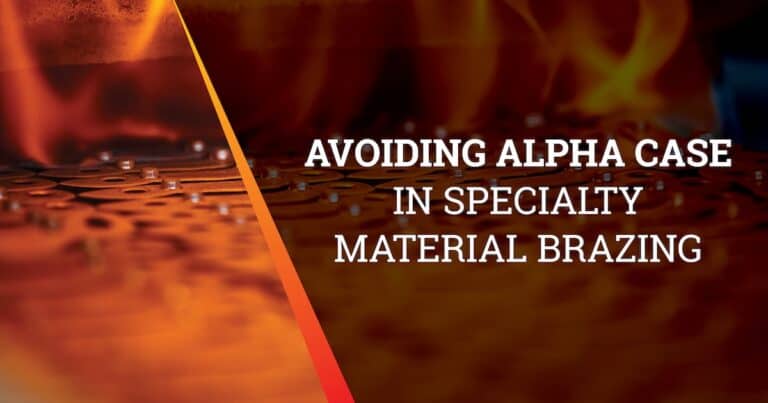Unlocking the full potential of exotic materials and alloys is the key to groundbreaking products. Titanium, Inconels, and niobium—the revered stars of engineering—possess unique properties that drive modern advancements. However, for the uninitiated, brazing these gems can pose formidable challenges.
Modern manufacturing advancements often hinge on the unique properties of exotic materials, and alloys like titanium, Inconels, and niobium are no exception. These materials, hailed for their exceptional characteristics, present significant technical challenges during brazing, demanding specialized handling and expertise beyond the capabilities of facilities that only handle 300 series stainless steel.
Navigating the Maze: Challenges of Brazing Specialty Materials
In industries where precision is paramount—aerospace, automotive, and medical device manufacturing, to name a few—specialty materials like titanium, Inconels, and niobium C-103 are irreplaceable. Their high melting points require meticulous temperature control during brazing to prevent thermal distortion and ensure flawless joint formation. The reactivity of titanium and niobium with oxygen, coupled with Inconel’s sensitivity to oxidation, demands a meticulous approach to minimize oxygen exposure and preserve the integrity of brazed joints.
Cracking the Code: The Alpha Case Conundrum
Enter alpha case, a formidable adversary spawned during high-temperature heat treating. This hardened and brittle oxide layer can compromise the mechanical properties of mission-critical parts. With alpha case being harder and more brittle than the underlying metal, it poses a threat to ductility and toughness, particularly in applications subjected to stress or dynamic loading, potentially leading to mechanical failure.
Crafting Perfection: The Three Essential Steps to Alpha Case–Free Brazing
Embarking on projects involving these exotic materials requires a commitment to perfection. Delicate and costly, these materials often find their way into applications that demand unwavering performance, whether it’s a jet engine, a gas turbine, or a family car. To ensure your brazing projects sidestep alpha case formation, consider these three essential steps:
- Early Planning: Flawless brazing begins with meticulous planning. Planning must begin before components take shape to tailor the brazing process to the unique attributes of specialty materials and eliminate potential glitches.
- Systematic Quality Control: Rigorous quality control measures should be put in place at various inspection checkpoints during and after the brazing process. From material delivery to the finished product’s return to the manufacturing facility, meticulous quality control ensures adherence to the highest standards. Post-brazing inspection should always take place to ensure flawless results.
- The Right Brazing Solution: No compromise is acceptable when brazing materials like titanium, niobium, or similar alloys. These materials thrive in the vacuum furnace, and precision vacuum brazing consistently produces alpha case–free components.
The Dance of Heat and Precision
Brazing specialty materials is a delicate dance of artistry and science—a tango of extreme heat and precision, where the stakes are high, and the margin for error is nonexistent. These exotic materials hold the key to products that are lighter, stronger, and more resilient. Through early planning, systematic quality control, and the implementation of the right brazing solution, it’s possible to unlock their full potential, ensuring they shine as the building blocks of exceptional products that deliver unforgettable customer experiences.
